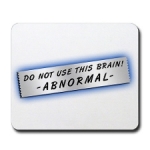LoQ wrote:
Choosing 95% as the minimum acceptable gives 5% more "runway" when something goes wrong, and 95% is often very achievable. M.D.Hosehead, have you not suggested 95 or 96 percent in your previous posts? I remember thinking at the time that you were very smart to pick that number.
Thanks and right back atcha. I just pulled that number out of the air, and was interested to see that Dr Punjabi uses 95% as his treatment goal.
I like your analogy of the precipice. When they make the movie, it will be a cliffhanger.
I wanted to know more about what they found about desats, so tracked down the article here:
http://www.plosmedicine.org/article/inf ... ed.1000132
Turns out the study was of heart patients with
untreated SDB. They found:
1. that SDB correlates with increased risk of death, and the more severe the SA, the higher the risk of death. No surprise there.
2. independent of all other risk factors, men aged 40-70 who spent more than 2.7% of the night at less than 90% saturation had 1.8 times the mortality from all causes.
However, TST90 was a significant predictor of mortality in men less than 70 y in age, even after adjusting for age, race, smoking status, BMI, systolic and diastolic blood pressure, AHI, prevalent hypertension, diabetes, and cardiovascular disease. Compared to the first three quartiles (TST90≤2.70%), younger men in the fourth quartile (TST90>2.70%) had an adjusted hazard ratio of 1.83 (95% CI: 1.31–2.52) for mortality. In older men and women of both age categories, TST90 was not associated with mortality.
3. The study did not assess sublethal damage such as dementia.
4. The study design cannot indicate whether treating SDB or eliminating desats reverses the risk. Nevertheless, Dr Punjabi shoots for 95% sat all night, and I think it makes sense for me to do the same.













